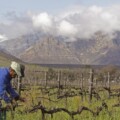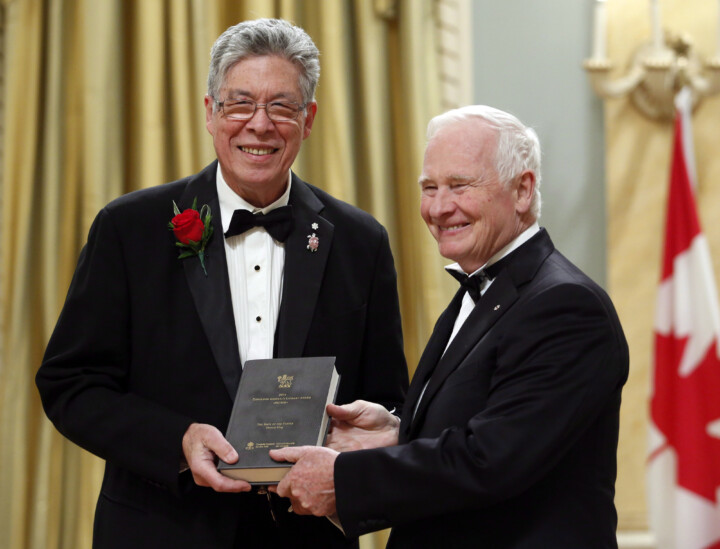Happy Thanksgiving! Or is that phrase redundant? Can one even give thanks unhappily? Maybe not, but these two words are more efficiently expressed than, “I hope you’ve found at least something to be thankful for.”
In the Canadian wine world, those who see declining sales might be excused for not being quite as grateful this October as in other years. The beleaguered vintners of the Okanagan, many of whom had no grapes this year to harvest, can be thankful that their worst growing season ever, following a vine-killing January deep freeze, is at least behind them.
Cranky Canadian wine drinkers, who’ve seen their relative purchasing power eroded over the last two years, might be thankful to learn that the trade has finally noticed declining sales for ever more expensive wines. At a fancy industry event I attended in Toronto last week, the consensus among importers was the demand for high-quality wines under $25 among consumers and restaurateurs alike is growing.
One lady who is on top of this trend towards affordable quality is Jessica Harnois. Her popular line of Bù has just launched in Ontario, just in time for the long weekend. Made by Canada’s largest wine producer, Arterra, the Bù line has enjoyed success as the most popular wine in Quebec by being a kind of hybrid product. It’s somewhere between bulk and fine wines and sells millions of bottles every year.
Harnois, who lives in the Eastern Townships of Quebec, describes herself on her website as a sommelière and an animatrice. The first term is the feminine version of the word English speakers now commonly call wine stewards. Harnois began as a hospitality professional, working in Montreal, Sydney (Australia), and Chicago before pivoting to being a high-end wine buyer for Quebec’s provincial liquor monopoly, the SAQ.
The second term is literally translated as “animator,” which is not inaccurate but might be more conventionally understood to mean creator. Harnois created Bù on the assumption that she could use her extensive buying connections abroad to source wines that could be bottled in Canada and that could offer consumers higher quality at supermarket prices. (Liquor laws in Quebec allow beer and wine sales in private retailers, like corner stores and supermarkets, as long as they are bottled in Quebec.)
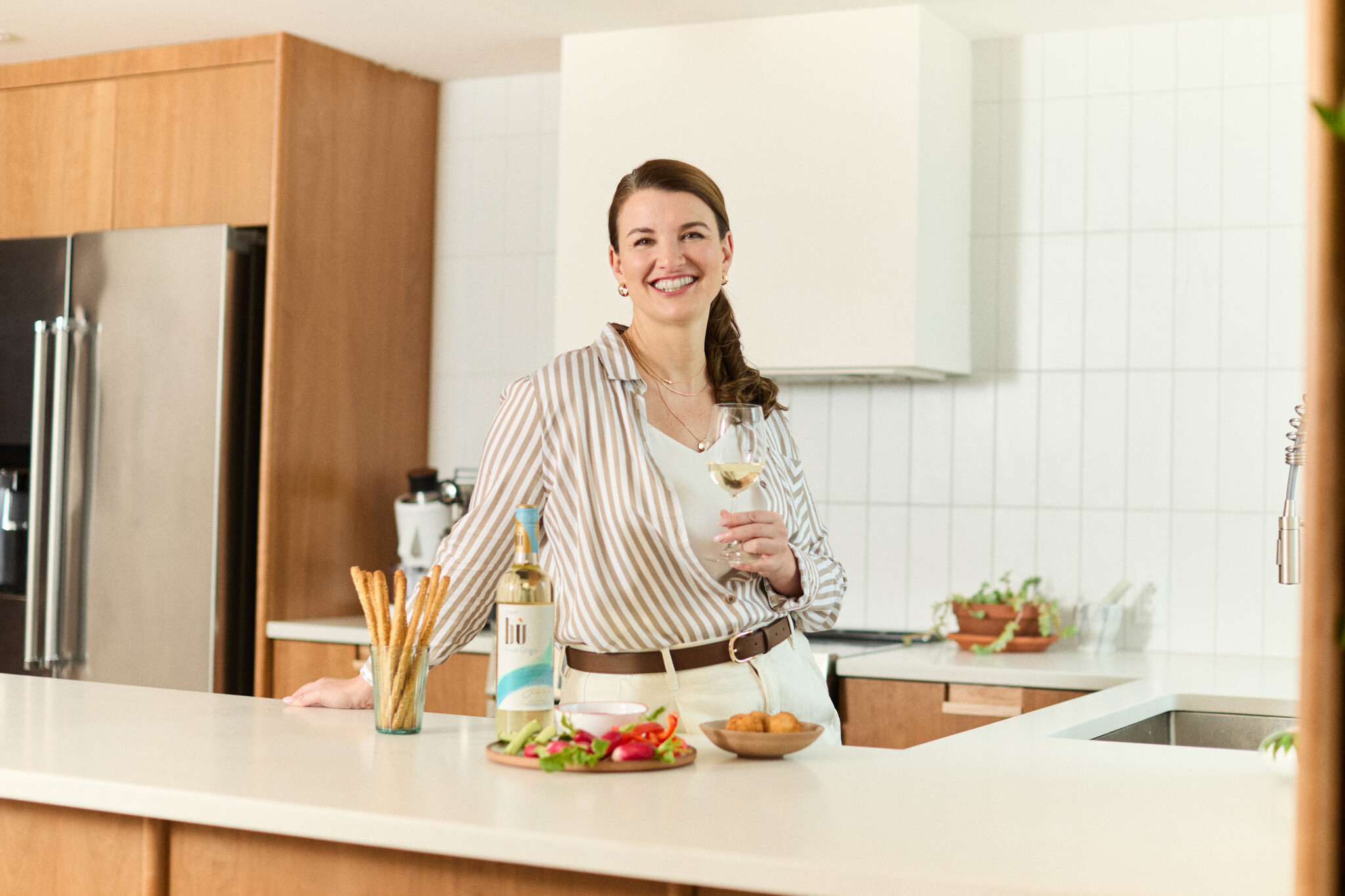
Jessica Harnois holding a glass of Bù wine. Photo credit: Arterra Canada.
I met Harnois in Toronto last month for a preview of the Ontario Bù wines. She was indeed animated and eager to talk about her latest creations and what drove her to create the original Bù line eight years ago. She told me, “I decided to create a wine brand that is accessible, affordable, and easy to understand.”
Harnois also said that while conventional wisdom is that everyday consumers preferred sweeter wines, what they were really looking for was the same thing that premium ($20 and up) consumers wanted: ripe fruit. Mass production wine producers working with low-quality fruit will try to mimic ripe flavours by adding or leaving in sugar. Harnois was and is determined to keep the sugar levels in Bù wines low (around 4 grams per litre) by keeping the quality of the bulk wines she buys from France, Italy, and Spain high.
The Bù wines are priced at $18. Arterra sent me a selection of the Quebec wines to try after I met with Harnois. These include wines made with 100 percent Canadian grapes, sourced from Arterra directly, including a sparkling Chardonnay. Another Chardonnay blend was 100 percent Italian, with Fiano grapes from Campania rounding out the wine.
I asked my eldest son, in his last year of undergraduate in Montreal, if he and his friends knew of Bù. He sent me a picture of the Chardonnay-Fiano blend on the door shelf of his fridge. He said they considered it “high-end dep wine,” after the Quebec name for corner stores, dépanneur. The bottle had been given to him for his birthday.
Tasting through some of the Quebec wines, I agreed with my son’s analysis but flipped to suit my middle-aged buying habits. These were well-made, fruit-forward wines, with no discernible residual sugar, that I would expect from an import priced at about $20; maybe a little more since post-pandemic inflation.
But what about the Ontario Bù line? They are made for a different retail regulatory environment. Arterra, along with rival large producer Andrew Peller Ltd., has its own retail network. The Ontario Bù line will be sold exclusively at Arterra’s Wine Rack chain of 164 stores. For that to happen, they must be made from at least 25 percent Ontario wine.
In a sane alcohol regulatory environment, Canadian wine bottlers would receive tanks of bulk wine from abroad at the ports of Halifax, Montreal, or Vancouver, or trucked into wherever from California. They would bottle them, price them according to their quality and market reception, and put them for sale like any other comestible. This is how supermarket wines work around the world. Not here.
For Harnois and Arterra to sell a bottle of wine in the province of Ontario outside of the liquor control board wholesale and retail monopoly, at least a quarter of its volume must be comprised of wine made from grapes grown, crushed, and fermented within the borders of the Dominion of Canada. Harnois’ challenge was to find domestic wines she could blend into the European ones she’d spent the last eight years sourcing.
The white wine she’s launched in Ontario is 75 percent Pinot Grigio, from the Veneto in Northeast Italy, with 25 percent domestic Vidal. Vidal is a hybrid grape, bred to withstand cold winters, that’s best known in Niagara for making ice wine. In the Bù version, it’s made bone dry and complements the white flower notes in a typical Pinot Grigio. Would a casual Pinot Grigio drinker know it was there? I doubt it since I’m not sure I would.
The two new Bù Ontario red wines get more interesting. Harnois has Pinot Noir from the Languedoc in the south of France. In it she blends 10 percent Ontario Vidal; following the Provençal tradition of blending white Viognier into red wines to lighten them. The next 15 percent is Ontario Baco Noir, another hybrid grape, that brings acidity to the wine. The result is a turkey-friendly cherry noted red on the lighter side. (Occitan Pinot Noir bottlers take note: maybe a bit of floral Viognier and a splash of juicy Cinsault would even out your wines?)
Harnois’ red meat wine is based on Spanish Tempranillo; the grape best known for the big reds of Rioja. Again she adds floral notes and juiced up levity with Vidal (8 percent) and Baco Noir (17 percent). This blend of warm and cool climate-grown grapes delivers a food-friendly blackberry fruited crowd-pleaser.
The Bù wines aren’t complicated, but they’re not meant to be. What I appreciate about them is that for a few dollars less than 20 dollars, they are very much made to please and are unapologetically looking for a wide audience. Jessica Harnois could have spent her professional life visiting Châteaux securing allotments of First Growth and Grand Crus wines. I’m thankful this October that instead she turned her expertise to pleasing the people.
Recommended for You
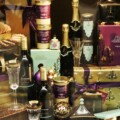
What to ask for when asking for wine this Christmas

The many faces of Chilean wine will only leave you itching to return for more
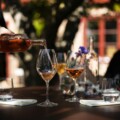
Four wine tasting season standouts

There’s more to South African wines than meets the eye
